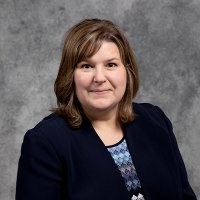FAFSA applications open

Beth Vollan
October 4, 2022
A federal program that can give college students up to $23,395 a year in financial aid has opened its application period.
The Free Application for Federal Student Aid – or FAFSA – program began taking applications Oct. 1. The application period will remain open through the 2023-2024 academic year, but students who file by South Dakota State University’s March 1, 2023, priority date may have better opportunities, according to Beth Vollan, the director of Financial Aid and Scholarships.
“I think a lot of our students wouldn’t be here if it wasn’t for federal aid,” Vollan said.
The aid from this application can bring in substantial amounts of money for those in need. Janice Minder, system vice president for academic policy and planning for the South Dakota Board of Regents, said that for 2022-23, students who are claimed as dependents can receive $5,500 to $17,395 in financial aid assistance. Students who are not listed as dependents on their parents’ income tax return can potentially receive $9,500 to $23,395.
FAFSA is a program that asks for information about a family’s financial status for all students who apply. This information is then analyzed to dole out an appropriate amount of aid.
Here’s how the application works: Information gathered by the FAFSA includes dependency status, along with parental income if one is a dependent, and student income, along with some other factors. Income and asset information is requested to help determine a family’s ability to pay. Parental income numbers are required by federal law, and students with more difficult financial situations often get more money.
The Federal Aid Handbook states: “The family is the first source of the student’s support.” Some people criticize the fact that the government uses parental income, and a student may file as independent only if they meet the criteria listed on FAFSA.
“The data collected on the FAFSA is plugged into a formula that calculates an estimated family contribution number for each student which is used to determine financial aid eligibility,” Vollan said.
The index number is determined by all of the information listed on the FAFSA and provides an idea of how much money a student is eligible for.
“For example, if your family contribution is zero, you would receive the highest Pell grant,” Vollan said.
This aid can come in grants, scholarships or loans. For students who were offered loans, the question of when to pay them back is often asked.
“When you take out federal student loans, they stay in what is called an in-school status,” Vollan said. “As long as you remain at least half-time, with no gaps longer than six months, the loans will not need to be repaid until after graduation.”
About 89% of SDSU students receive some sort of financial aid, Vollan said. Statistics provided from 2020 show that 64% of students received grants or scholarships, 49% took out loans and 18% received Pell grants. Most grants and scholarships do not need to be paid back, but loans do.
Tracey Buisker, assistant director of Financial Aid at SDSU, said federal loan amounts have stayed the same since the 1990s.
According to Board of Regents numbers, it costs $9,298.50 in tuition and mandatory fees to attend SDSU this year for an undergraduate paying in-state tuition and taking 30 credits.
“Our office is here to provide information and help students navigate financial aid options as they look for ways to pay for college,” Vollan said.
This program is available for each year a student attends school. Interested students can find the application at https://studentaid.gov. For any additional questions, the Service Enrollment Center on campus can be reached at (800)-952-3541.























